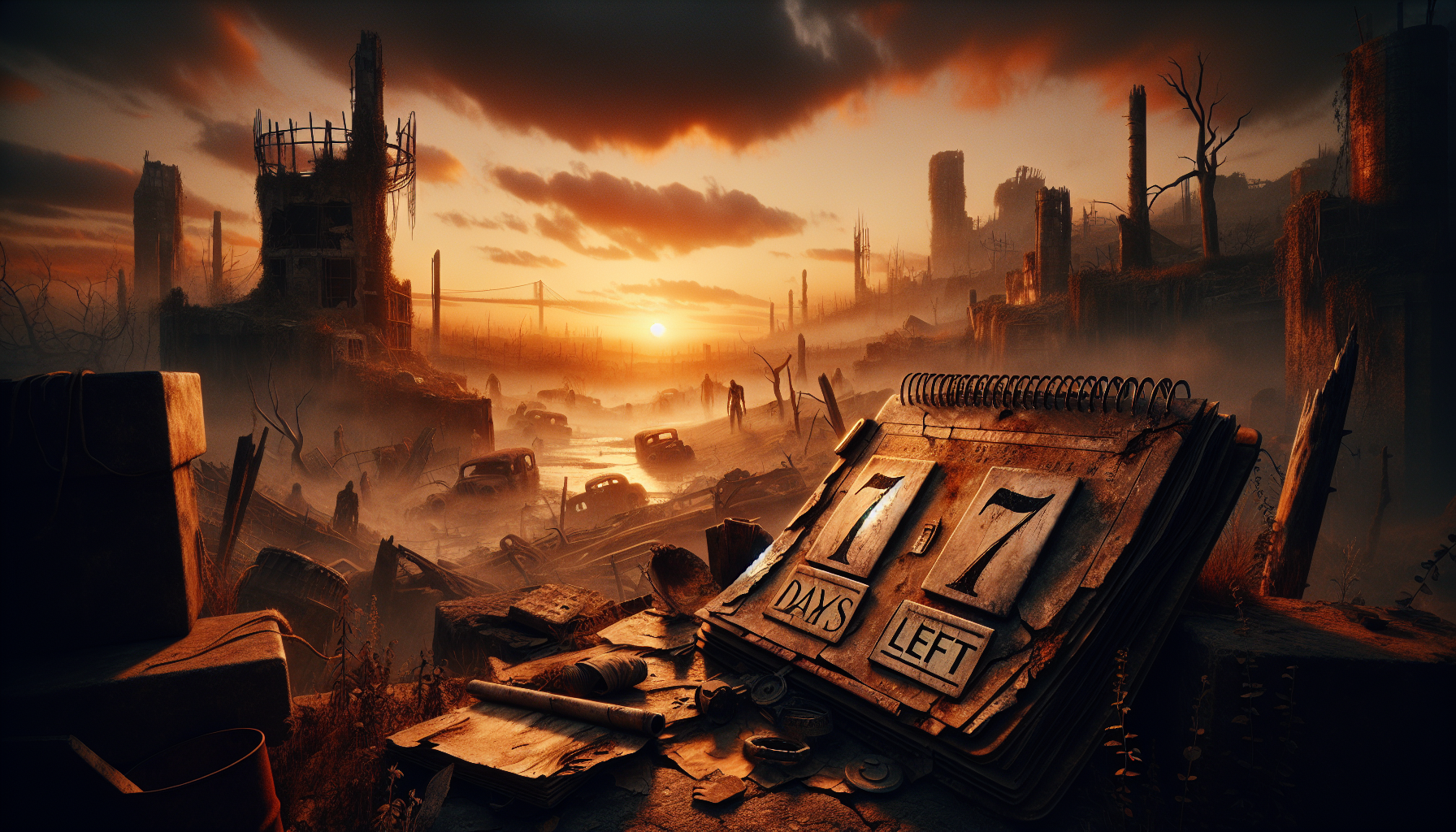In the gritty, post-apocalyptic world of "7 Days to Die," scavenging is not just a survival tactic—it's a way of life. Yet, as any seasoned player will attest, delving into high-risk areas is not for the faint-hearted. The thrill of discovering rare loot can be marred by the constant threat of zombie hordes and hostile environments. Fear not, for with a little foresight and a dash of courage, you can maximize your scavenging efforts while keeping the danger at arm’s length.
Mapping Out Your Scavenging Routes
Before you strap on your boots and venture into the unknown, it's crucial to have a game plan. Think of your scavenging route as the backbone of your expedition. Like any seasoned traveler who consults a map before hitting the road, you should have a clear idea of your destination and potential detours. High-risk areas, such as cities and military bases, are treasure troves of valuable items, but they're also teeming with threats.
It’s always a good idea to start by scouting the area from a distance. Use binoculars if you’ve got them or find a high vantage point. What can you see from the top of that decrepit watchtower? Does the air above that cluster of buildings seem too quiet? These small observations can paint a picture of what to expect. Consider creating a mental map or even sketching a basic one on paper to remember the layout when you’re up close and personal—because trust me, it’s easy to get turned around when you’re sprinting for your life. For those who prefer a more structured approach, check out how to locate high-value loot areas to enhance your scavenging strategy.
And here's a tip from personal experience: mark waypoints for important loot spots or safe zones. These markers can guide you back to valuable finds that you might otherwise overlook amid the chaos. Prioritize hitting these spots quickly and efficiently to avoid lingering longer than necessary.
Handling Zombie Encounters
Zombies—ever the unwelcome adversaries—will inevitably cross your path. How you handle these encounters can spell the difference between life and an untimely demise. Remember: discretion is often the better part of valor. It's not always about fighting every zombie you see; sometimes the best move is the one you don’t make. To enhance your stealth skills, explore how to use stealth to avoid zombies.
When I first started playing, I got too eager and thought I'd clear out an entire building singlehandedly. Let's just say that didn't end well. It taught me the value of stealth and strategy. Move quietly, avoid unnecessary noise, and use tools like crossbows or silenced weapons to take out isolated threats without drawing unwanted attention. If stealth fails and the undead start closing in, having a strong melee weapon or firearm ready can quickly turn the tide in your favor.
But combat isn’t your only friend; evasion techniques are critical, too. Learn the lay of the land to outmaneuver your foes. Zigzagging through dense buildings or darting through alleyways can throw zombies off your trail. And, when worst comes to worst, having a solid exit strategy is clutch. Know where the nearest building with rooftop access or underground hidey-hole is located. This foresight can often provide a vital few seconds to regroup or recuperate. Planning your defense ahead of time? Consider how to plan your defense for Horde Nights for more comprehensive survival tactics.
Prioritizing Loot Items
In high-risk areas, your inventory space is more precious than gold. With so many tempting items scattered around, prioritization is key. Ask yourself: what will most improve my chances of surviving another day? If you're struggling with inventory management, read about how to manage your inventory space for tips.
Food and water are always high on the list—without them, you're a goner. But beyond the essentials, consider your current needs and the strategic objectives of your game. Medical supplies can turn a critical situation around, while building materials might be crucial if you’re planning to construct or reinforce a base soon. If your weapons are on their last legs, prioritizing ammo and replacement gear is a wise choice. Or, if you’re eyeing an upgrade, parts for weapon mods or new armor might take precedence. For more on crafting essentials, explore how to craft essential survival items.
Here's a mnemonic I use: "FEAR"—Food, Equipment, Ammo, and Resources. It's easy to remember, even when panic sets in, and it helps keep scavenging trips focused. Efficiently managing these loot categories will assure that your inventory supports your broader survival goals, rather than hindering them.
A Final Word on Scavenging in High-Risk Areas
Embryonic players and veterans alike can attest that scavenging, particularly in dangerous territories, is both a challenging and immensely rewarding experience. By mapping out precise routes, handling zombie encounters with a combination of stealth and skill, and prioritizing loot effectively, you can truly make the most of each risky venture without falling prey to the lurking dangers.
Remember, in this ruthless world of the undead, being prepared not only enhances your survivability but enriches your gaming experience. Every piece of hard-won loot, each close escape, is a badge of your journey into the heart of peril. So, pull up your map, ready your gear, and ask yourself—what treasures await you in those sprawling wastelands? If you're ready to enhance your survival skills, consider learning how to improve your crafting speed.
Feeling ready to take on the dangers of high-risk scavenging? Share your own tips and tales from the front lines below, and let’s help each other thrive in the wasteland. Safe scavenging, my friends!





